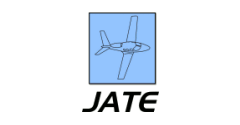Abstract
As the scope of multirotor unmanned aerial vehicle (UAV) applications increases, more attention is being paid to UAV energy requirements, which vary depending on the mission profile. To obtain accurate information about the UAV battery during flight, the idea of a digital twin including a battery state estimation model is promising. For battery state estimation, a Kalman filter combination is the preferred approach in the literature. Comparing different Kalman filters, the unscented Kalman filter has a more accurate estimation for nonlinear systems compared to the extended Kalman filter. In the application of UAV flight with load-dependent flight missions, the comparison of different Kalman filter estimation methods has not yet been researched. In order to evaluate the applicability of different state of charge estimation methods applied to different UAV flight missions, an extended Kalman filter, an unscented Kalman filter, and the Coulomb-counting method are implemented in this research and combined with an end of discharge estimation. To compare the estimation methods based on a delivery mission and a facade inspection mission, a parameter identification of the UAV battery is performed, and an equivalent circuit model is developed and combined with the estimation methods to estimate the battery state. The results of the investigation show that the unscented Kalman filter achieves more accurate state of charge estimation results than the extended Kalman filter, even in the field of UAV application. The results also show that the choice of estimation method is mainly influenced by the accuracy of the parameter identification process, while the dynamic load of a UAV mission has less impact. Contrarily, the end of discharge estimation does not correlate with the accuracy of the state of charge estimation, indicating that the end of discharge estimation is more dependent on the dynamic load.
Recommended Citation
Dibbern, Hanna; Roßberg, Morten; and Werner, Claudia
(2023)
"Comparative Evaluation of Investigation Methods for Estimating the Load-Dependent State of Charge and End of Discharge of a Multirotor UAV Battery,"
Journal of Aviation Technology and Engineering:
Vol. 12:
Iss.
2, Article 4.
Available at: https://doi.org/10.7771/2159-6670.1293
Included in
Aerospace Engineering Commons, Aviation Commons, Chemical Engineering Commons, Electrical and Computer Engineering Commons, Mechanical Engineering Commons


